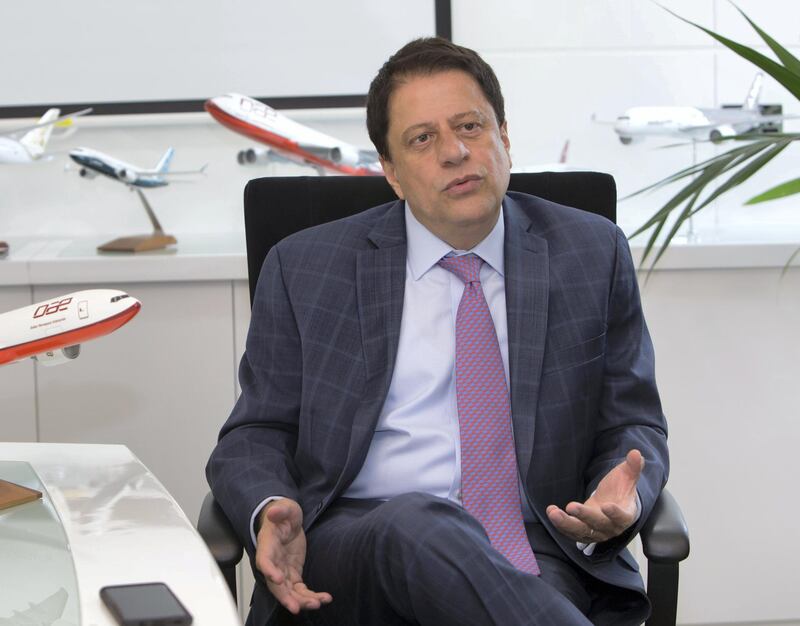Dubai Aerospace Enterprise, the Middle East's biggest aircraft lessor, plans to double its fleet over the coming decade from 375 planes, as it expands after the acquisition of Ireland's Awas last August, its chief executive said.
Dubai government-owned DAE is in talks with plane makers Boeing and Airbus for a potential multibillion dollar order of about 400 narrow-body jets, said Firoz Tarapore.
"If you look at where we are today size-wise and in terms of industry evolution – the technology changes going through the fleets – we have to sell about 300 aircraft and buy about 500 new aircraft over the next eight to 10 years," he said.
"It is very reasonable to say that the business should be at least two times what it is today, by the end of that period."
The company hopes to place the order “when the pricing and timing is right”, Mr Tarapore said, but added that discussions are taking longer because of market conditions.
"The current supply situation is impacting rental levels negatively and making them inconsistent with the acquisition prices of aircraft," he said.
The new order would be restricted to the popular narrow-body planes for which the lessor sees the greatest demand – principally, Boeing’s 737Max and the Airbus 320neo.
DAE is also scouting for new acquisitions and preparing for a "large liquidity event" in the next two months. The company was reportedly in talks to issue a $500 million sukuk next year, but that issuance may be sooner, Mr Tarapore said.
"You will see us evaluate a large unsecured debt issuance, or a sukuk, or another form of alternative liquidity, and this will be a 2018 event, not a 2019 one," he said. "It will be to improve the unsecured portion of our borrowing on existing leverage."
The issuance will be benchmark size ($500m or more), as DAE seeks to win an investment grade rating. Ratings agencies S&P and Moody's upwardly revised DAE's corporate credit rating this month on "successful" integration of Dublin lessor Awas.
The acquisition raised DAE's portfolio to about 400 aircraft worth $14 billion. DAE's owned fleet is worth $11bn to $12bn, Mr Tarapore said, and will double over the next eight to 10 years to around $22.4bn.
Aircraft leasing is an increasingly competitive business as the commercial aviation industry grows and airlines come under pressure to expand as well as restructure their fleet.
Globally, more than 42,700 new planes worth $6.3 trillion will be required over the next two decades, presenting a total market opportunity of $15tn, according to Boeing’s latest commercial outlook in July.
_________
Read more:
[ Dubai Aerospace Enterprise wins rating upgrade on Awas integration ]
[ Dubai Aerospace secures up to $800m in funding as it mulls 400-jet order ]
[ Dubai Aerospace in talks to place multi-billion dollar order for 400 jets ]
________
In the Middle East – which, together with Africa and South Asia, represents more than a third of DAE’s client base – airlines will require 2,990 new aircraft worth $754bn over the period, as passenger traffic in the region climbs by an average of 5 per cent per year to 2035, according to the International Air Transport Association.
DAE's financial performance has been "very strong", due to internal cost management by the company and an improvement in its industry, Mr Tarapore said. While revenues in the first half of this year trebled year-on-year to $711m – driven by the proportional increase in lease revenues from the new business – net profit rose more dramatically, to $199m from $47m the year earlier, he said.
In January, DAE set up a dedicated asset management unit with plans to build a $5bn portfolio on behalf of institutional investors in five years. The company is on track to achieve that goal, Mr Tarapore said, with around $1.5bn of assets at present.
The chief executive declined to say whether DAE’s shareholders would publicly list the group in the coming years.






